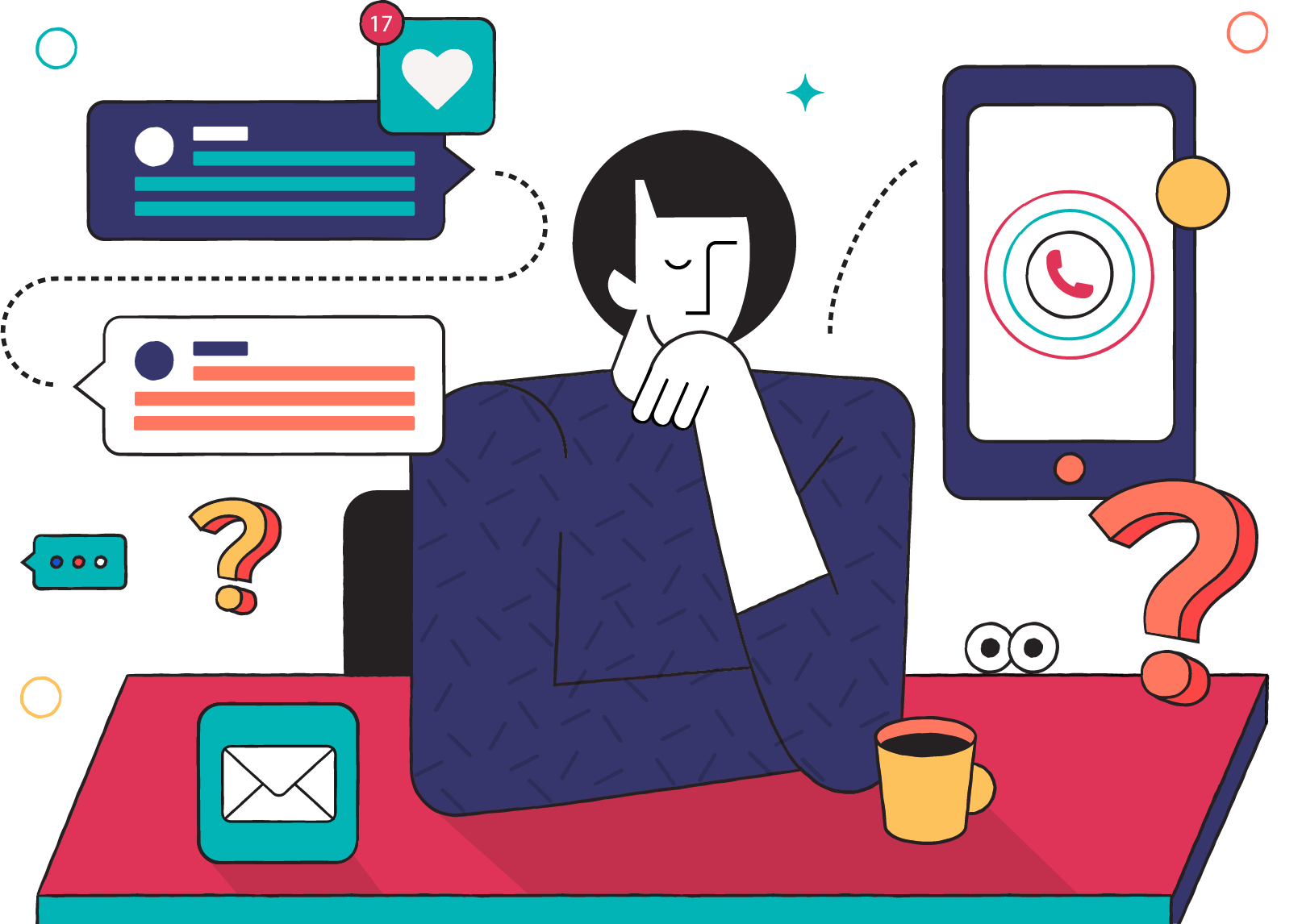How to choose
the right channel
for your business
While things like omnichannel and multi-channel are useful for some companies, its best to evaluate channels one by one rather than assuming that they’ll all work for your company or your customers’ needs. Selecting the right channel or channels to use doesn’t have to be rocket science, luckily, and actually comes down to a few traits of your customers and some of the traits of your team and people on it.

Here are a few things to consider when deciding the right channel for your business.
Understanding your customer demographics and communication preferences
According to a study by MarketingDive: 25-year-olds and under primarily chose social media as their preferred means of communication for customer service, while those over 55 opted for telephone contact. The people somewhere in-between (25-34-year-olds) preferred email the most, followed by mobile apps. There’s a stark line in which platforms are most used and preferred by certain demographics. Do you know what demographic group makes up the majority of your userbase? If not, that may be an interesting and useful piece of information to have as you go into selecting which channels you’d like to offer for support. After all, if you decide that chat and email are your best bets, but a majority of your users are over the age of 55, it’s likely that you may run into some trouble with people wanting a type of service that you don’t provide.
While it’s true that it’s not necessarily going to be a deal breaker if you don’t offer the type of support that they are keen on, it could eventually cost you some valuable revenue due to loyalty or upselling. According to Internet Retailer, online sales are expected to reach $523 billion in the next five years, up 56 percent from $335 billion in 2015. That’s a huge opportunity for earning that you are missing out on by not offering the type of support that your customer likes best. So, research which demographics make up your user base, and try to make decisions based loosely around what they prefer and enjoy.
Understanding what kind of support you are providing
Some products are more technical than others. For example, if you are selling a stuffed animal with bendable arms, the type of inquiries you’ll receive in support are different from if you are selling a much more technical product, like a service that integrates into someone’s site via code. The questions for the bear may be around billing, customization, and may lend themselves to quick, fairly straightforward interactions. The inquiries that come through for the second product, may be fairly technical and require a bit more deep-diving into what the true nature of the issue may be.
Different channels lend themselves to different types of troubleshooting, so depending on the type of questions you run into on a day-to-day basis, you may want to consider one over the other. For example, email can be good to asynchronous communication when a question requires a lot of deep-diving or troubleshooting on a technical side. Chat can be excellent for quick transactional back and forths, such as ones frequently used in a retail setting. The phone is a difficult medium but is useful for putting customers at ease if they are anxious or nervous about something within your product. 70% of issue resolutions occur through voice; hearing a person’s voice can better build trust for some customers than reading an email.
Understanding where you want to go, especially with your product and support strategy, can serve to give you a crystal ball into your future of which platforms you want to — and should — use to best support your customers.
Understanding the bandwidth of your team
Different support channels, depending on how and when you use them, require more or less bandwidth. For example, phone support requires a high amount of focus and can’t be multitasked, whereas a customer support person can have multiple chats or emails open at once and not run into any trouble. If you have a small team and desperately want to offer phone support, you might consider what capacity you choose to do so in — maybe, for example, you choose to only offer it for enterprise customers, or for people who specifically pay for a phone call.
While offering certain channels can be very attractive to different types of customers, it will be significantly less attractive if your team can’t keep up with it and your wait times persistently go up. In terms of scalability, the functional channels, from most to least scalable, are email, chat, social media, phone, video chat/in-person support. Depending on the size of your team and the number of conversations that you have coming through, one or two of those in tandem may work better than the others. Try to preserve your first response time over any other metric or decision that you make for your team.